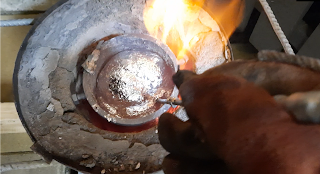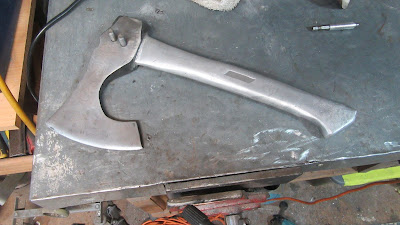Photogrammetry into 3D Print => Into a Solid Aluminum Metal Casting
I have experimented the first time with lost PLA metal casting, I used as always recycled aluminum scrap for this project, I created in the past two 3D printings using photogrammetry method of two statues, since then I created various sizes of the statues 3d printings but always wanted to have them made from a more solid material such as metal.
You are welcome to view my YouTube video of the metal casting creation from start to finish ;-).
Using Photogrammetry Method Transforming Images into a 3D Printed Object
I started by using photogrammetry method taking around 80 images of each of the objects that I planned to turn into metal the main software I worked with was Autodesk ReCap Photo, once the stage of meshing and texturing was complete I did the final touches of removing additional backgrounds and cosmetic fixing's to the object surface. The next step was to upload the files to Ultimaker Cura 3d printing software and test some real 3d prints.
In the images you can see the stages of the Photogrammetry preparation, both for the owl statue and for the crying statue (AKA - The Legend of the Yogi Man - "Orang Malu").
I decided to make an experiment with four hollow 3d printed patterns, x2 in 2mm shell thickness and x2 in 1mm shell thickness. I wanted to experiment if there will be any difference in the aluminum casting details and my assumption was correct where the two 2mm aluminum casting failed while the other two in 1mm turned out much more successful, both not perfect but looking great for the first lost PLA test. I also learned that with lost PLA casting its important to extend the 3D printing and add an additional 1cm base to the object as the PLA rise up once the molten aluminum is poured and in my casting I lost 1cm in height vs the original 3D printing.3D Printing of the 2 Statues for the Lost PLA Metal Casting
Testing x4 3D Printings for Aluminum Metal Casting
Using Oil Bonded Sand for the 3D Print Metal Casting
Aluminum Casting Clean Up and Light Polish
I use a saber saw to cut off the extra aluminum base and an angle grinder to clean and flat the base. After I gave the aluminum casting some light clean up and buffing.
The 3D Printing and the Final Aluminum Metal Casting
The final project result below, I will probably try at some point in the future to create a larger metal casting of a 3D printing Yogi Man ;-) and add additional base to fix/compensate of the couple of mm's missing at the bottom of the metal casting.





















































